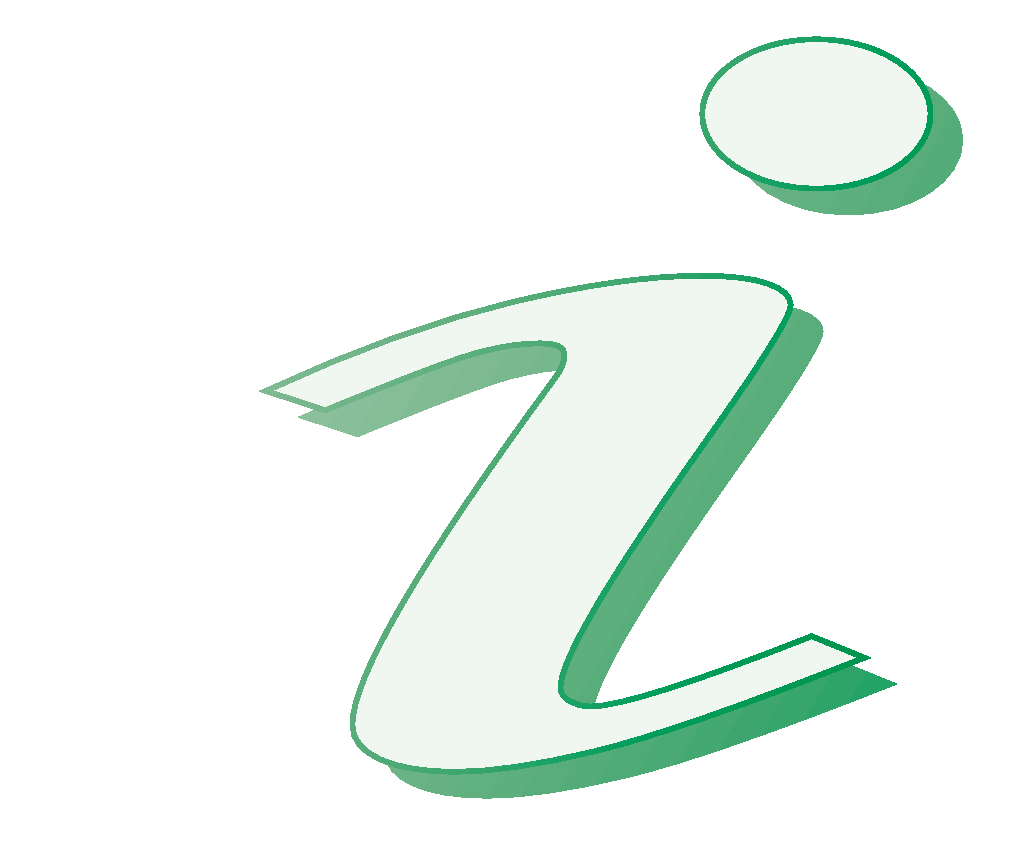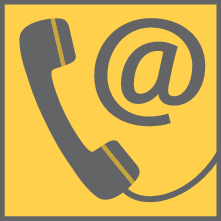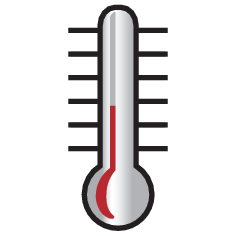Inhaltsverzeichnis
Nadelhülsen, Nadelbüchsen
- Lagerausführung
- Belastbarkeit
- Ausgleich von Winkelfehlern
- Schmierung
- Abdichtung
- Drehzahlen
- Geräusch
- Temperaturbereich
- Käfige
- Lagerluft
- Abmessungen, Toleranzen
- Nachsetzzeichen
- Aufbau der Lagerbezeichnung
- Dimensionierung
- Mindestbelastung
- Gestaltung der Lagerung
- Ein- und Ausbau
- Rechtshinweis zur Datenaktualität
- Weiterführende Informationen
Nadelhülsen, Nadelbüchsen
Die Lager:
- eignen sich aufgrund ihrer sehr niedrigen Querschnittshöhe besonders für Anwendungen mit geringstem radialem Bauraum ➤ Bild
- werden eingesetzt, wenn die Gehäusebohrung nicht als Laufbahn für Nadelkränze geeignet ist
- nehmen hohe radiale Belastungen auf (sind reine Radiallager) ➤ Bild, ➤ Bild, ➤ Bild, ➤ Bild
- benötigen gegenüber den massiven Nadellagern einen deutlich geringeren radialen Bauraum ➤ Bild
- laufen im Allgemeinen direkt auf der Welle (ohne Innenring) ➤ Bild, ➤ Bild
- lassen relativ hohe Drehzahlen zu
- sind einfach zu montieren ➤ Abschnitt
- benötigen keine zusätzlichen axialen Sicherungselemente (dadurch ist die Gehäusebohrung einfach zu fertigen) ➤ Abschnitt
- können sehr gut zum Abschluss von Lagerstellen an Wellenenden genutzt werden (Nadelbüchsen) ➤ Bild
- ergeben besonders raumsparende, kostengünstige und wirtschaftliche Lagerungen.
|
Radialer Bauraumvergleich
|
 |
Lagerausführung
Ausführungsvarianten
Nadelhülsen gibt es als:
- Standard-Nadelhülsen mit Käfig ➤ Bild und ➤ Bild
- Vollnadelige Nadelhülsen ➤ Bild
- Sonderlager ➤ Link und ➤ Link.
Nadelbüchsen werden geliefert als:
Nadelhülsen und Nadelbüchsen
Die Außenhülsen sind dünnwandig und spanlos gefertigt
Nadelhülsen und Nadelbüchsen gehören zur Gruppe der Radial-Nadellager. Diese einbaufertigen Lagerungselemente sind Wälzlager kleinster radialer Bauhöhe. Sie bestehen aus spanlos geformten, dünnwandigen Außenhülsen und Nadelkränzen, die zusammen eine Baueinheit bilden ➤ Bild, ➤ Bild, ➤ Bild, ➤ Bild. Der Käfig führt die Nadelrollen achsparallel in Taschen.
Für Lagerungen mit kleinstem radialem Bauraum
Durch den fehlenden Innenring und die dünnwandige Außenhülse haben die Lager nur eine sehr niedrige Querschnittshöhe ➤ Bild. Dadurch eignen sie sich besonders für Anwendungen mit geringstem radialem Bauraum. Der überwiegende Teil der Lager ist einreihig und ohne Schmierbohrung.
Nadelhülsen und -büchsen sind auch mit Innenringen IR oder LR kombinierbar
Durch den fehlenden Innenring setzen Nadelhülsen und Nadelbüchsen voraus, dass die Lagerlaufbahn auf der Welle gehärtet und geschliffen ist ➤ Abschnitt. Ist die Welle nicht als Wälzlagerlaufbahn ausführbar, können die Lager mit den Innenringen IR oder LR kombiniert werden ➤ Bild. Werden breitere Innenringe eingesetzt, können diese auch als Anlauffläche für die Dichtringe G und SD genutzt werden ➤ Bild.
|
Nadelhülsen mit Innenring
|
 |
Standard-Nadelhülsen mit Käfig
Gegenüber Nadelbüchsen sind die Lager beidseitig offen
Nadelhülsen sind auf beiden Seiten offen und haben das Basiskennzeichen HK ➤ Bild und ➤ Abschnitt. Sie werden mit Nadelkränzen geliefert. Lager mit Nadelkränzen lassen gegenüber vollnadeligen Ausführungen höhere Drehzahlen zu. Die Lager gibt es offen und abgedichtet ➤ Bild und ➤ Abschnitt. Zweireihige Ausführungen haben eine Schmierbohrung in der Außenhülse und das Nachsetzzeichen ZW ➤ Bild.
|
Einreihige Nadelhülsen Fr = Radiale Belastung
|
 |
|
Zweireihige Nadelhülse Fr = Radiale Belastung
|
 |
Vollnadelige Nadelhülsen
Bei kleinstem radialem Bauraum besonders tragfähig
Vollnadelige Nadelhülsen haben das Basiskennzeichen HN ➤ Bild. Diese Lager sind durch die maximale Anzahl der Nadelrollen höchst tragfähig. Sie lassen jedoch nicht die Drehzahlen zu, die bei Nadelhülsen mit käfiggehaltenen Wälzkörpern möglich sind.
|
Vollnadelige Nadelhülse Fr = Radiale Belastung |
 |
Nadelbüchsen
Gegenüber Nadelhülsen sind die Lager einseitig geschlossen
Nadelbüchsen sind auf einer Seite geschlossen ➤ Bild. Sie eignen sich damit gut zum Abschluss von Lagerstellen an Wellenenden. Dadurch ist ein Unfallschutz bei drehender Welle gegeben. Darüber hinaus sind die Lager vor Schmutz und Feuchtigkeit geschützt. Der Boden ist größenabhängig glatt oder versickt (versteift). Der profilierte Boden kann auch geringe axiale Führungskräfte übernehmen. Die Nadelbüchsen gibt es offen und abgedichtet ➤ Bild und ➤ Abschnitt.
|
Nadelbüchsen Fr = Radiale Belastung
|
 |
Sonderlager
Neben dem Katalog-Standardprogramm gibt es auf Anfrage Sonderlager:
- mit dem Hüllkreis Fw von 2 mm bis 100 mm
- für besondere Geräuschanforderungen (Lager mit spezieller Geräuschprüfung).
Gelenkkreuzbüchsen
Für Kreuzgelenke gibt es Gelenkkreuzbüchsen der Baureihe BU und BBU auf Anfrage.
Belastbarkeit
Die Lager sind reine Radiallager
Nadelhülsen und Nadelbüchsen nehmen hohe radiale Kräfte auf, sie dürfen jedoch nur radial belastet werden. Muss die Lagerstelle auch axiale Kräfte aufnehmen, können die Lager beispielsweise mit Axial-Nadellagern AXW kombiniert werden ➤ Bild.
|
Nadelhülse mit Axial-Nadellager kombiniert Fr = Radiale Belastung Fa = Axiale Belastung
|
 |
Ausgleich von Winkelfehlern
Die Lager eignen sich nicht zum Ausgleich von Schiefstellungen der Welle gegenüber dem Gehäuse
Nadelhülsen und Nadelbüchsen sind nicht zum Ausgleich von Winkelfehlern geeignet. Inwieweit eine Schiefstellung der Welle gegenüber der Gehäusebohrung toleriert werden kann, hängt von Faktoren wie der Konstruktion der Lagerstelle, der Lagergröße, dem Betriebsspiel, der Belastung ab. Aus diesem Grund kann kein Richtwert für eine Schiefstellung angegeben werden.
Schiefstellungen verursachen auf jeden Fall höhere Laufgeräusche, beanspruchen die Käfige stärker und wirken sich nachteilig auf die Gebrauchsdauer der Lager aus.
Schmierung
Befettete Lager
Abgedichtete Lager sind mit einem Lithiumkomplexseifenfett nach GA08 befettet. Die Fettfüllung ist so bemessen, dass sie für die gesamte Gebrauchsdauer des Lagers ausreicht. Dadurch sind die Lager wartungsfrei.
Befettete Lager vor dem Einbau nicht auswaschen und nicht auf Temperaturen > +80 °C erwärmen.
Nicht befettete Lager
Nicht befettete Lager müssen mit Öl oder Fett geschmiert werden. Der überwiegende Teil der einreihigen Lager hat keine Schmierbohrung.
Verträglichkeit mit Kunststoffkäfigen
Werden Lager mit Kunststoffkäfig verwendet, ist sicherzustellen, dass beim Einsatz von Syntheseölen oder Schmierfetten auf Syntheseölbasis sowie bei Schmierstoffen mit einem hohen Anteil an EP‑Zusätzen die Verträglichkeit des Schmierstoffs mit dem Käfigmaterial gegeben ist.
Ölwechselfristen einhalten
Gealtertes Öl und im Öl enthaltene Additive können bei höheren Temperaturen die Gebrauchsdauer der Kunststoffe beeinträchtigen. Vorgegebene Ölwechselfristen müssen deshalb unbedingt eingehalten werden.
Schmierung vollnadeliger Nadelhülsen
Die Nadeln werden durch ein spezielles Fett gehalten
Da bei den vollnadeligen Lagern die Nadeln nicht mechanisch gehalten werden (keinen Käfig haben), sind die Nadelrollen für den Transport und die Montage mit einem speziellen Fett gesichert (DIN 51825-K1/2K-30). Dieses Fett hat jedoch nur eine unzureichende Dauerschmierwirkung. Deshalb wird nach dem Einbau der Lager eine Nachschmierung empfohlen.
Bestehen Unsicherheiten bezüglich der Nachschmierung, bitte bei Schaeffler rückfragen.
Lager in Sonderausführung
Als Sonderausführung gibt es auf Anfrage:
- nicht abgedichtete Lager, befettet mit einem Lithiumkomplexseifenfett nach GA08 (Nachsetzzeichen GA08)
- Lager mit Schmierbohrung ab HK0609 (Nachsetzzeichen AS1).
Abdichtung
Die Lager sind offen oder abgedichtet
Nadelhülsen und Nadelbüchsen gibt es in nicht abgedichteter Ausführung nach DIN 618:2008 (ISO 3245:2015) und abgedichtet nach DIN 618:2008.
Abgedichtete Lager
Integrierte Dichtungen sind besonders bauraumsparend
Die berührenden Dichtungen schützen bei normalen Betriebsbedingungen vor Schmutz, Spritzwasser und dem Verlust von Schmierstoff. Solche in das Lager integrierte Dichtungen sind eine bauraumsparende, zuverlässige, bewährte und wirtschaftliche Abdichtungslösung.
Nicht abgedichtete Lager
Abdichtung in der Anschlusskonstruktion vorsehen
Bei nicht abgedichteten Lagern muss die Abdichtung der Lagerstelle in der Anschlusskonstruktion erfolgen. Diese muss zuverlässig verhindern, dass:
- Feuchtigkeit und Verunreinigungen in das Lager gelangen
- Schmierstoff aus dem Lager austritt.
Abdichtung der Lagerstelle mit Dichtringen G oder SD
Wirkungsvolle Dichtelemente zur Abdichtung offener Lager
Lagerstellen mit offenen Nadelhülsen und Nadelbüchsen können wirtschaftlich mit den Dichtringen G oder SD abgedichtet werden. Die Dichtringe sind als berührende Dichtungen ausgeführt und werden vor dem Lager angeordnet ➤ Bild, ➤ Bild. Sie eignen sich für Umfangsgeschwindigkeiten an der Lauffläche bis 10 m/s und schützen die Lagerstelle sicher vor Verunreinigungen, Spritzwasser und übermäßigem Verlust von Schmierfett. Die Dichtringe sind auf die geringen radialen Abmessungen der Nadelhülsen abgestimmt. Sie sind sehr montagefreundlich, da sie einfach in die Gehäusebohrung gepresst werden.
|
Abdichtung der Lagerstelle mit Dichtringen G oder SD
|
 |
Drehzahlen
Grenz- und Bezugsdrehzahlen in den Produkttabellen
In den Produkttabellen sind in der Regel zwei Drehzahlen angegeben:
- die kinematische Grenzdrehzahl nG
- die thermische Bezugsdrehzahl nϑr.
Grenzdrehzahl
Die Grenzdrehzahl nG ist die kinematisch zulässige Drehzahl eines Lagers. Sie darf auch bei günstigen Einbau- und Betriebsbedingungen nicht ohne vorherige Rücksprache mit Schaeffler überschritten werden ➤ Link. Die Werte in den Produkttabellen gelten für Ölschmierung.
Werte bei Fettschmierung
Bei Fettschmierung der offenen Käfiglager sind jeweils 60% des in den Produkttabellen angegebenen Wertes zulässig.
Drehzahlen bei vollnadeligen Lagern
Aufgrund der Lagerkinematik und der höheren Temperaturen im Lager sind die Drehzahlen bei vollnadeligen Lagern niedriger als bei Lagern mit Käfig.
Bezugsdrehzahlen
nϑr dient zur Berechnung von nϑ
Die thermische Bezugsdrehzahl nϑr ist keine anwendungsbezogene Drehzahlgrenze, sondern eine rechnerische Hilfsgröße zur Ermittlung der thermisch zulässigen Betriebsdrehzahl nϑ ➤ Link.
Lager mit berührenden Dichtungen
Für Lager mit berührenden Dichtungen sind nach DIN ISO 15312:2004 keine Bezugsdrehzahlen definiert. In den Produkttabellen ist für diese Lager deshalb nur die Grenzdrehzahl nG angegeben.
Geräusch
Schaeffler Geräuschindex
Der Schaeffler Geräuschindex (SGI) ist für diese Lagerart noch nicht verfügbar ➤ Link. Die Einführung und Aktualisierung der Daten für diese Baureihen erfolgt sukzessiv.
Temperaturbereich
Limitierende Größen
Die Betriebstemperatur der Lager ist begrenzt durch:
- die Maßstabilität der Lagerringe und Wälzkörper
- den Käfig
- den Schmierstoff
- die Dichtungen.
Mögliche Betriebstemperaturen der Nadelhülsen und Nadelbüchsen ➤ Tabelle.
Zulässige Temperaturbereiche
|
Betriebstemperatur |
Offene |
Abgedichtete |
|
|---|---|---|---|
|
mit Stahlblechkäfig oder vollnadelig |
mit Polyamidkäfig PA66 |
||
|
|
–30 °C bis +140 °C |
–20 °C bis +120 °C |
–20 °C bis +100 °C, |
Sind Temperaturen zu erwarten, die außerhalb der angegebenen Werte liegen, bitte bei Schaeffler rückfragen.
Käfige
Standard sind Stahlblechkäfige
Die Käfige sind bis auf wenige Ausnahmen aus Stahlblech. Lager mit Kunststoffkäfig haben das Nachsetzzeichen TV. Andere Käfigausführungen sind auf Anfrage lieferbar. Bei solchen Käfigen können jedoch die Eignung für hohe Drehzahlen und hohe Temperaturen sowie die Tragzahlen von den Angaben für die Lager mit den Standardkäfigen abweichen.
Bei hohen Dauertemperaturen und Anwendungen mit schwierigen Betriebsbedingungen sollten Lager mit Stahlblechkäfig eingesetzt werden. Bestehen Unsicherheiten bezüglich der Käfigeignung, bitte bei Schaeffler rückfragen.
Lagerluft
Anstelle der Radialluft gilt der Hüllkreisdurchmesser Fw
Für Lager ohne Innenring ist anstelle der radialen Lagerluft das Maß des inneren Hüllkreisdurchmessers Fw maßgebend. Der Hüllkreis ist der innere Begrenzungskreis der Nadelrollen bei spielfreier Anlage an der Außenlaufbahn. Im eingebauten Zustand der Lager liegt der innere Hüllkreisdurchmesser Fw etwa in der Toleranzklasse F8. Voraussetzung dafür ist, dass die Bohrungstoleranzen für Lager ohne Innenring eingehalten werden ➤ Abschnitt, ➤ Tabelle und ➤ Tabelle.
Prüfung des Hüllkreisdurchmessers Fw
Fw ist nur im eingebauten Zustand prüfbar
Bei Nadelhülsen und Nadelbüchsen ist der innere Hüllkreisdurchmesser Fw erst im eingebauten Zustand prüfbar. Zur Prüfung wird das Lager in einen Lehrring aus Stahl gepresst, dessen zylindrische Bohrung mit dem Nennmaß D das untere Abmaß der Toleranzklasse N6 (nach ISO 286‑2) hat. Der Lehrring muss eine Mindestwanddicke von 20 mm haben, die Mindestbreite muss der Lagerbreite entsprechen. Geprüft wird mit einem Lehrdorn nach ISO 1132-2. Die Toleranzklasse des Hüllkreises liegt im Bereich der in der Tabelle festgelegten Werte ➤ Tabelle.
Beispiel
Beispiel zur Prüfung von Fw
Für die Nadelhülse HK1010 (Fw = 10 mm) muss Fw zwischen 10,013 mm und 10,031 mm liegen, die Lehrringbohrung 13,980 mm sein (unteres Abmaß = +13 μm, oberes Abmaß = +31 μm) ➤ Tabelle.
Lager für Hüllkreismessungen nicht mehrfach ein- und auspressen. Im Lehrring geprüfte Lager dürfen nicht weiter verwendet werden.
Lehrringbohrung und Hüllkreisabmaße (nach DIN 618:2008)
|
Hüllkreis |
Außen- |
Lehrring- |
Hüllkreisabmaß |
|
|---|---|---|---|---|
|
Oberes |
Unteres |
|||
|
Fw |
D |
|||
|
mm |
mm |
mm |
μm |
μm |
|
2 3 |
4,6 6,5 |
4,587 6,484 |
+24 +24 |
+6 +6 |
|
4 5 6 |
8 9 10 |
7,984 8,984 9,984 |
+28 +28 +28 |
+10 +10 +10 |
|
7 8 9 10 |
11 12 13 14 |
10,980 11,980 12,980 13,980 |
+31 +31 +31 +31 |
+13 +13 +13 +13 |
|
12 12 13 14 15 16 17 18 |
16 18 19 20 21 22 23 24 |
15,980 17,980 18,976 19,976 20,976 21,976 22,976 23,976 |
+34 +34 +34 +34 +34 +34 +34 +34 |
+16 +16 +16 +16 +16 +16 +16 +16 |
|
20 22 25 28 30 |
26 28 32 35 37 |
25,976 27,976 31,972 34,972 36,972 |
+41 +41 +41 +41 +41 |
+20 +20 +20 +20 +20 |
|
32 35 40 45 50 |
39 42 47 52 58 |
38,972 41,972 46,972 51,967 57,967 |
+50 +50 +50 +50 +50 |
+25 +25 +25 +25 +25 |
|
55 60 |
63 68 |
62,967 67,967 |
+60 +60 |
+30 +30 |
Abmessungen, Toleranzen
Abmessungsnormen

Die Hauptabmessungen der Lager entsprechen DIN 618:2008 und ISO 3245:2015, soweit genormt.
Toleranzen
Die Toleranzen entsprechen DIN 618:2008 (ISO 3245:2015), soweit genormt. Der innere Hüllkreisdurchmesser Fw liegt ungefähr in der Toleranzklasse F8 ➤ Abschnitt.
Nachsetzzeichen
Die Bedeutung der in diesem Kapitel verwendeten Nachsetzzeichen zeigt ➤ Tabelle sowie medias interchange http://www.schaeffler.de/std/1B69.
Nachsetzzeichen und ihre Bedeutung
|
Nachsetzzeichen |
Bedeutung der Nachsetzzeichen |
|
|---|---|---|
|
AS1 |
mit Schmierbohrung ab HK0609 |
Sonderausführung, auf Anfrage |
|
GA08 |
nicht abgedichtete, befettete Lager für Betriebstemperaturen von –20 °C bis +140 °C |
Sonderausführung, auf Anfrage |
|
RS |
einseitig berührende Dichtung |
Standard |
|
TV |
Käfig aus glasfaserverstärktem Polyamid PA66 |
Standard |
|
ZW |
zweireihig, mit Schmierbohrung |
Standard |
|
2RS |
beidseitig berührende Dichtung |
Standard |
Aufbau der Lagerbezeichnung
Die Bezeichnung der Lager folgt einem festgelegten Schema. Beispiele ➤ Bild und ➤ Bild. Für die Bildung der Kurzzeichen gilt DIN 623-1 ➤ Bild.
|
Nadelbüchse, offen: Aufbau des Kurzzeichens |
 |
|
Nadelhülse, beidseitig abgedichtet: Aufbau des Kurzzeichens |
 |
Dimensionierung
Dynamische äquivalente Lagerbelastung
P = Fr bei rein radialer Belastung konstanter Größe und Richtung
Die zur Dimensionierung dynamisch beanspruchter Lager verwendete Lebensdauer-Grundgleichung L = (Cr/P)p setzt eine Belastung konstanter Größe und Richtung voraus. Bei Radiallagern ist das eine rein radiale Belastung Fr ➤ Abschnitt. In die Lebensdauergleichung wird deshalb für P die Lagerbelastung Fr eingesetzt (P = Fr) ➤ Formel.
Dynamische äquivalente Belastung
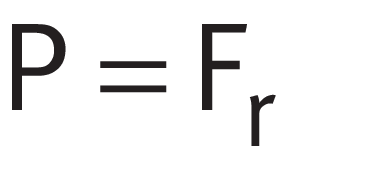
Legende
| P | N |
Dynamische äquivalente Lagerbelastung |
| Fr | N |
Radiale Belastung |
Statische äquivalente Lagerbelastung
Werden Nadelhülsen und Nadelbüchsen statisch belastet, gilt ➤ Formel.
Statische äquivalente Belastung

Legende
| P0 | N |
Statische äquivalente Lagerbelastung |
| F0r | N |
Größte auftretende radiale Belastung (Maximalbelastung) |
Statische Tragsicherheit
S0 = C0/P0
Neben der nominellen Lebensdauer L (L10h) ist immer auch die statische Tragsicherheit S0 zu überprüfen ➤ Formel. Für Nadelhülsen und Nadelbüchsen muss S0 ≧ 3 sein.
Statische Tragsicherheit
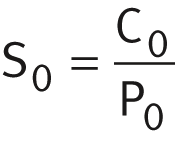
Legende
| S0 | - |
Statische Tragsicherheit |
| C0 | N |
Statische Tragzahl |
| P0 | N |
Statische äquivalente Lagerbelastung. |
Mindestbelastung
Um Schlupfschäden zu vermeiden, ist eine radiale Mindestbelastung von P > C0r/60 notwendig
Damit zwischen den Kontaktpartnern kein Schlupf auftritt, müssen die Nadelhülsen und Nadelbüchsen stets ausreichend hoch belastet sein. Erfahrungsgemäß ist dazu eine radiale Mindestbelastung in der Größenordnung von P > C0r/60 erforderlich. In den meisten Fällen ist die Radiallast allerdings durch das Gewicht der gelagerten Teile und die äußeren Kräfte schon höher als die erforderliche Mindestbelastung.
Ist die radiale Mindestbelastung niedriger als oben angegeben, bitte bei Schaeffler rückfragen.
Gestaltung der Lagerung
Radiale Befestigung der Lager
Außenhülse/Innenring auf ganzem Umfang und ganzer Breite abstützen
Damit die Tragfähigkeit der Lager voll genutzt werden kann und die geforderte Lebensdauer erreicht wird, müssen die dünnwandigen Außenhülsen im Gehäuse ausreichend starr unterstützt werden. Durch den dünnwandigen Mantel erhalten die Lager ihre genaue Form erst in einer festen Passung. Die Abstützung für die Außenhülse in der Gehäusebohrung ist als zylindrische Sitzfläche auszuführen. Die Sitzflächen für die Außenhülse und die Laufbahn für die Wälzkörper bzw. den Innenring (wenn die Lagerung nicht als Direktlagerung ausgeführt ist) sollen nicht durch Nuten, Bohrungen oder sonstige Ausnehmungen unterbrochen sein. Die Genauigkeit der Gegenstücke muss bestimmten Anforderungen entsprechen, die Bohrungstoleranzen für die Gehäusebohrung (empfohlene Toleranzklassen) hängen vom Gehäusewerkstoff ab ➤ Tabelle. Sind die Gehäuse nicht starr, muss durch Versuche diejenige Wellentoleranz ermittelt werden, mit der das gewünschte Betriebsspiel erreicht wird. Zahlenwerte für die IT-Qualitäten ➤ Tabelle. Zur beschädigungsfreien Montage der Lager muss die Welle eine Schlupffase von 10° bis 15° haben.
Toleranzklassen und Oberflächenausführung für das Gehäuse, abhängig vom Werkstoff
|
Gehäusewerkstoff |
Bohrungstoleranz nach ISO 286-2 |
Rundheitstoleranz |
Parallelitätstoleranz |
empfohlener Mittenrauwert |
|---|---|---|---|---|
|
Ramax (Rzmax) |
||||
|
max. |
max. |
μm |
||
|
Stahl oder Gusseisen |
N6 Ⓔ |
IT5/2 |
IT5/2 |
0,8 (4) |
|
Aluminium (Al) |
R6 Ⓔ |
|||
|
Magnesium (Mg) |
S6 Ⓔ |
Zahlenwerte für ISO-Grundtoleranzen (IT-Qualitäten) nach ISO 286-1:2010
|
IT-Qualität |
Nennmaß in mm |
|||||||
|---|---|---|---|---|---|---|---|---|
|
über |
– |
3 |
6 |
10 |
18 |
30 |
50 |
|
|
bis |
3 |
6 |
10 |
18 |
30 |
50 |
80 |
|
|
Werte in μm |
||||||||
|
IT3 |
2 | 2,5 | 2,5 | 3 | 4 | 4 | 5 | |
|
IT4 |
3 | 4 | 4 | 5 | 6 | 7 | 8 | |
|
IT5 |
4 | 5 | 6 | 8 | 9 | 11 | 13 | |
Axiale Befestigung der Lager
Eine feste Passung genügt meist zur axialen Festlegung
Wird auf axiale Fixierelemente wie Schultern und Sprengringe verzichtet, kann die Gehäusebohrung einfach und besonders wirtschaftlich ausgeführt werden. Gleichzeitig vereinfacht sich dadurch auch der Einbau der Lager.
Laufbahn für Lagerungen ohne Innenring (Direktlagerung)
Laufbahn als Wälzlagerlaufbahn ausführen
Laufen Nadelhülsen und Nadelbüchsen direkt auf der Welle (ohne Innenring), muss die Laufbahn für die Wälzkörper als Wälzlagerlaufbahn ausgeführt (gehärtet und geschliffen) sein. Gestaltung der Laufbahn ➤ Tabelle. Die Angaben in der Tabelle beziehen sich auf allgemein übliche Anwendungsfälle. Ist die Welle nicht als Laufbahn ausführbar, können die Lager mit Schaeffler-Laufringen kombiniert werden. Hier erhöht sich dann jedoch die Bauhöhe der Lager um die Dicke der Ringe.
Toleranzklasse und Oberflächenausführung für die Welle (Direktlagerung)
|
Wellentoleranz |
Rundheitstoleranz |
Parallelitätstoleranz |
empfohlener Mittenrauwert |
|---|---|---|---|
|
Ramax (Rzmax) |
|||
|
max. |
max. |
μm |
|
|
h6 Ⓔ |
IT3 |
IT3 |
0,2 (1) |
Stähle für die Laufbahn (Direktlagerung)
Durchhärtende Stähle
Als Werkstoffe für die Wälzlagerlaufbahn bei Direktlagerung sind durchhärtende Stähle nach ISO 683-17 (wie 100Cr6) geeignet. Diese Stähle können auch randschichtgehärtet werden.
Einsatzstähle
Einsatzstähle entsprechen meistens ISO 683-17 (wie 17MnCr5, 18CrNiMo7-6) oder EN 10084 (wie 16MnCr5).
Stähle für induktive Randschichthärtung
Für Flamm- und Induktionshärtung sind Stähle nach ISO 683-17 (wie C56E2, 43CrMo4) oder DIN 17212 (wie Cf53) zu verwenden.
Oberflächenhärte und Härtetiefe
Soll der Oberflächenhärte: ≧ 670 HV
Die erforderliche Oberflächenhärte von mindestens 670 HV gilt für Laufbahnen, Anlaufscheiben und Wellenschultern. Bei einsatz-, flamm- oder induktionsgehärteten Stählen sind eine Oberflächenhärte von 670 HV bis 840 HV und eine ausreichende Härtetiefe CHD oder SHD sicherzustellen.
Laufbahn weicher als 670 HV
Wenn die Laufbahn zwar den Anforderungen an Wälzlagerwerkstoffen entspricht, jedoch weicher als 670 HV ist, dann darf die Lagerung nicht mit der vollen Tragfähigkeit des Lagers belastet werden. Zur Ermittlung der dynamischen und statischen Belastbarkeit der Lagerung ist die dynamische Tragzahl C der Lager mit dem Minderungsfaktor fH (dynamischer Härtefaktor) und die statische Tragzahl C0r mit dem Minderungsfaktor fH0 (statischer Härtefaktor) zu multiplizieren ➤ Bild und ➤ Bild.
|
Dynamischer Härtefaktor bei Minderhärte der Laufbahnen/Wälzkörper fH = Dynamischer Härtefaktor HV, HRC = Oberflächenhärte |
 |
|
Statischer Härtefaktor bei Minderhärte der Laufbahnen/Wälzkörper fH0 = Statischer Härtefaktor HV, HRC = Oberflächenhärte |
 |
Ermittlung der Einsatzhärtungs-Härtetiefe
Näherungswert zur Einsatzhärtungs-Härtetiefe
Für einen Näherungswert zur Festlegung der Mindesthärtetiefe kann von der Beziehung nach ➤ Formel ausgegangen werden. Als Bezugsgröße für die vorliegende Beanspruchung dient die vom Wälzkörperdurchmesser Dw und von der Beanspruchungshöhe abhängige Vergleichsspannung nach der Gestaltänderungsenergiehypothese (GEH).
Einsatzhärtungs-Härtetiefe

Legende
| CHD | mm |
Einsatzhärtungs-Härtetiefe (Case Hardening Depth) |
| Dw | mm |
Wälzkörperduchmesser |
Die lokale Härte muss stets über der lokal erforderlichen Härte liegen, die aus der Vergleichsspannung berechnet werden kann.
Ermittlung der Einhärtungs-Härtetiefe
Bei diesen Oberflächen-Härteverfahren sind zur Festlegung der erforderlichen Härtetiefe die Belastung und die Kontaktgeometrie zu berücksichtigen.
Ermittlung der Einhärtungs-Härtetiefe
Als Faustformel zur Berechnung der Einhärtungs-Härtetiefe SHD gilt die Beziehung nach ➤ Formel.
Einhärtungs-Härtetiefe

Legende
| SHD | mm |
Einhärtungs-Härtetiefe (Surface Hardening Depth) |
| Dw | mm |
Wälzkörperduchmesser |
| Rp0,2 | N/mm2 |
Streckgrenze des Grundwerkstoffs |
Ein- und Ausbau
Lager beim Einbau nicht beschädigen
Die Lager sind selbsthaltend (nicht zerlegbar). Ihr Einbau erfolgt mit einem speziellen Einpressdorn ➤ Bild. Der Bund des Einpressdorns muss an der gekennzeichneten Stirnseite (Kurzzeichen) des Lagers anliegen. Zur Halterung des Lagers ist ein Rundschnurring vorzusehen. Länge und Übermaß des Ringes müssen vom Kunden auf die Abmessung und das Gewicht des Lagers abgestimmt werden. Die bei der Montage auftretenden Einpresskräfte hängen von mehreren Faktoren ab. Der Einbau ist so abzustimmen, dass der Lagerbord an der Stirnseite nicht deformiert wird. Erfordert die Anwendung eine von der Beschreibung abweichende Montage, ist der korrekte und beschädigungsfreie Einbau der Lager durch eigene Einbauversuche abzusichern.
Nadelhülsen und Nadelbüchsen dürfen beim Einpressen nicht verkantet werden, da dies zu Beschädigungen des Lagers führen kann. Ist Fettschmierung vorgesehen, sind die Lager vor dem Einbau zu befetten.
|
Nadelhülse mit einem Einpressdorn montieren: Gestaltung des Montagedorns Allgemeintoleranzen nach ISO 2768-1 Fw = Innerer Hüllkreisdurchmesser D = Außendurchmesser des Lagers R = Radien am Einpressdorn
|
 |
Schaeffler-Montagehandbuch
Wälzlager sehr sorgfältig behandeln
Wälzlager sind vielfach bewährte Präzisions-Maschinenelemente zur Gestaltung wirtschaftlicher, zuverlässiger und betriebssicherer Lagerungen. Damit diese Produkte ihre Funktion einwandfrei erfüllen und die vorgesehene Gebrauchsdauer ohne Beeinträchtigung erreichen, müssen sie sorgfältig behandelt werden.
Das Schaeffler-Montagehandbuch MH 1 informiert umfassend über die sachgemäße Lagerung, Montage, Demontage und Wartung rotatorischer Wälzlager http://www.schaeffler.de/std/1B68. Daneben enthält es Angaben, die der Konstrukteur für den Ein‑ und Ausbau und die Wartung der Lager schon bei der Gestaltung der Lagerstelle beachten muss. Das Buch liefert Schaeffler auf Anfrage.
Rechtshinweis zur Datenaktualität
Die Weiterentwicklung der Produkte kann auch zu technischen Änderungen an Katalogprodukten führen
Im Mittelpunkt des Interesses von Schaeffler stehen die Optimierung und die Weiterentwicklung seiner Produkte und die Zufriedenheit seiner Kunden. Damit Sie sich als Kunde bestmöglich über diesen Fortschritt und den aktuellen technischen Stand der Produkte informieren können, veröffentlichen wir Produktänderungen gegenüber der gedruckten Ausgabe in unserem elektronischen Produktkatalog.
Änderungen der Angaben und Darstellungen dieses Katalogs behalten wir uns daher vor. Dieser Katalog gibt den Stand bei Drucklegung wieder. Neuere Veröffentlichungen unsererseits (in Printmedien oder digital) gehen automatisch diesem Katalog vor, soweit sie dasselbe Thema betreffen. Bitte prüfen Sie daher stets über unseren elektronischen Produktkatalog, ob aktuellere Informationen oder Änderungshinweise für Ihr gewünschtes Produkt verfügbar sind.
Weiterführende Informationen
Bei der Auslegung einer Lagerung sind neben den Angaben in diesem Kapitel auch folgende Kapitel in den technischen Grundlagen zu beachten:


